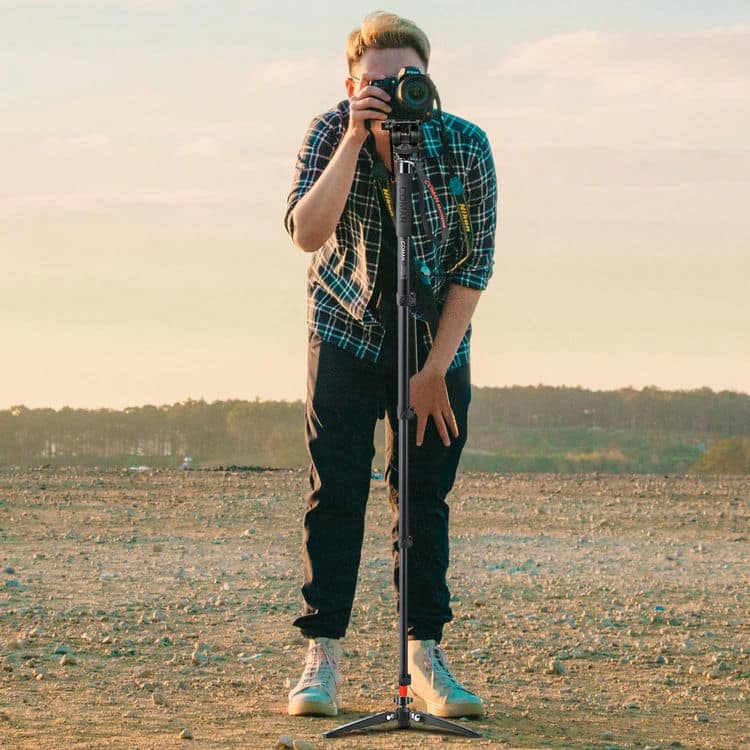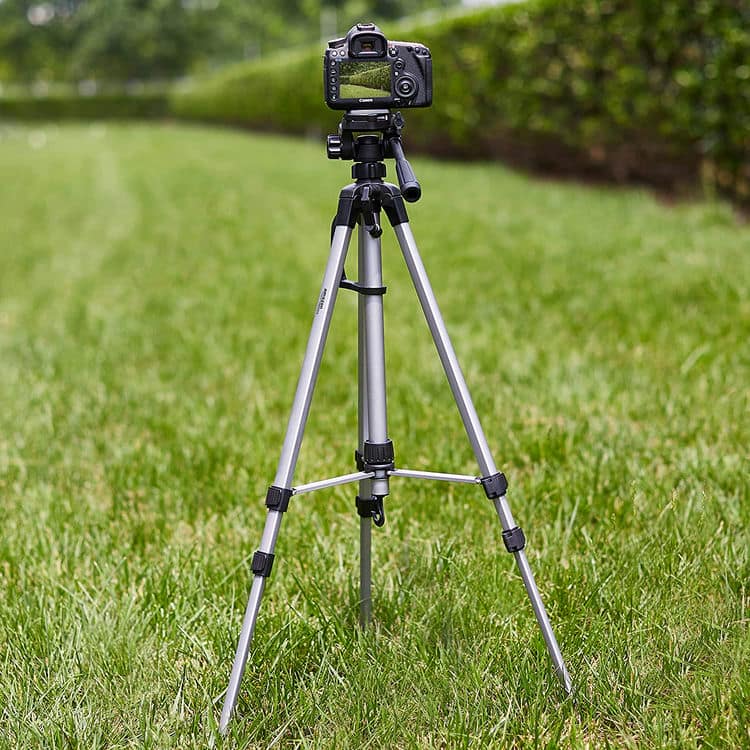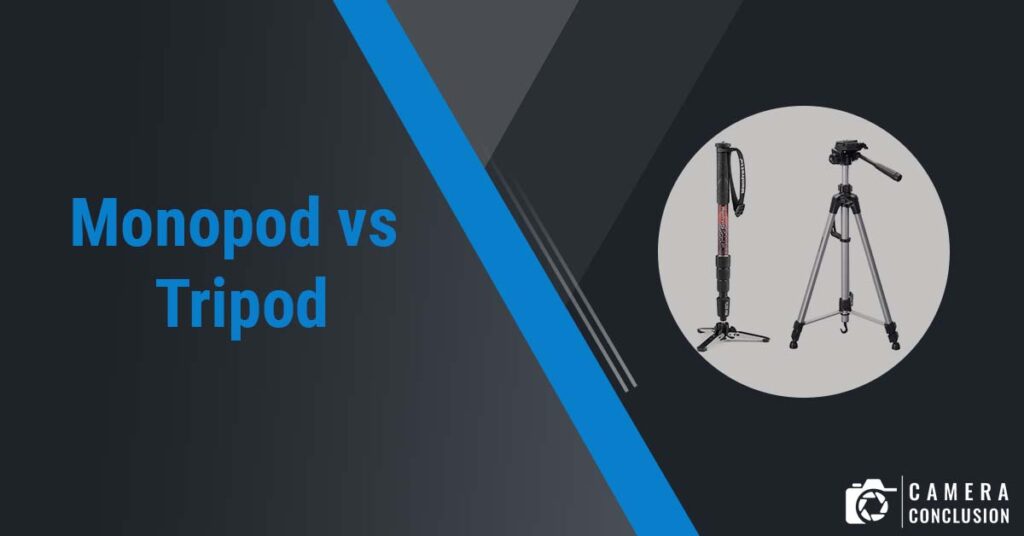Index
Monopods and tripods are two popular accessories used by photographers and videographers to stabilize their cameras and achieve sharp, clear images. While they share the same purpose, they differ in design and functionality.
A monopod is a single pole with a camera mount at the top, designed to support the weight of a camera and lens. It is typically lighter and more compact than a tripod, making it a good option for photographers on the move or shooting in tight spaces. A monopod provides some stability, but its primary function is to reduce camera shake and fatigue for the photographer, allowing them to shoot for longer periods of time without experiencing muscle strain.
On the other hand, a tripod is a three-legged stand that offers greater stability and support for a camera. It can hold the camera steady in almost any position, making it ideal for long-exposure photography, landscape shots, or macro photography. Unlike a monopod, a tripod can be adjusted to a variety of heights and angles, allowing photographers to compose their shots with precision and control. However, tripods are typically heavier and bulkier than monopods, which makes them less portable and more difficult to set up and take down quickly.
Monopod
Monopods and tripods are two types of camera supports that are commonly used by photographers to stabilize their cameras and take sharper photos. While both have their advantages and disadvantages, they serve different purposes and are suited for different types of photography.
A monopod is a single-legged support that is designed to be held in one hand. It is often used by photographers who need to be mobile, such as sports or wildlife photographers. Monopods are lightweight and easy to carry, making them ideal for photographers who need to move quickly or travel light. They also provide some stabilization, but not as much as a tripod, so they are best used in situations where a little bit of extra stability is needed.
A tripod, on the other hand, is a three-legged support that is designed to provide maximum stability. It is often used in situations where the camera needs to be completely still, such as for long exposures or for shooting in low light. Tripods are bulkier and heavier than monopods, but they are essential for certain types of photography, such as landscape, architectural, or studio photography.
In summary, monopods and tripods are both useful tools for photographers, but they serve different purposes. Monopods are ideal for photographers who need to be mobile and require a little bit of extra stability, while tripods are essential for situations where maximum stability is needed.

Tripod
Maximum stability: Tripods have three legs, which provide a stable base for your camera. This makes them ideal for long exposure photography, low-light photography, and situations where you need to keep your camera completely still.
Versatility: Tripods come in different sizes and shapes, and some even have adjustable legs that allow you to set them up on uneven surfaces. This versatility means that you can use a tripod in almost any situation, from landscape photography to studio photography.
Creative control: With a tripod, you can easily adjust the height, angle, and position of your camera. This gives you more creative control over your shots and allows you to experiment with different compositions.
Reduced camera shake: By using a tripod, you can eliminate camera shake caused by hand-holding your camera. This results in sharper images and helps you achieve a professional look.
Convenience: While tripods can be heavier and bulkier than monopods, they usually come with a carrying case, making them easy to transport. Some tripods even have quick-release mechanisms, making it easy to attach and detach your camera.

Factors to consider in choosing between Monopod and Tripod
Stability: If you need maximum stability for your shots, a tripod is the better option. The three legs of a tripod provide a stable base for your camera, while a monopod only has one leg, making it less stable.
Portability: If you need a camera support that is easy to carry and maneuver, a monopod is a better option. Monopods are lighter and more compact than tripods, making them ideal for photographers who need to be mobile.
Height: If you need to shoot from a higher angle, a tripod is a better option, as most tripods can be adjusted to different heights. Monopods are typically shorter and do not offer much height adjustment.
Shooting style: If you shoot in low light or need to take long exposures, a tripod is the better option, as it provides maximum stability and eliminates camera shake. Monopods are better suited for situations where you need to be mobile and want a bit of extra stability.
Cost: Monopods are generally less expensive than tripods, making them a more budget-friendly option. However, if you need maximum stability and versatility, a tripod may be worth the investment.
Choosing the right monopod or tripod
Weight capacity: Make sure that the monopod or tripod you choose can support the weight of your camera and any accessories you may use, such as a heavy lens or external flash.
Height: Consider the height of the camera support when fully extended, and make sure it is suitable for your shooting needs. Tripods are typically taller than monopods, but some monopods come with adjustable heights.
Leg stability: Look for a monopod or tripod with sturdy, stable legs that can support the weight of your camera and resist vibrations or wind. Carbon fiber legs tend to be more stable than aluminum, but they are more expensive.
Head type: The head of the monopod or tripod is where you will attach your camera. There are different types of heads, such as ball heads, pan-tilt heads, and fluid heads. Choose a head type that suits your shooting style and needs.
Portability: If you need to be mobile, choose a monopod or tripod that is lightweight and easy to carry. Look for models that come with a carrying case or strap for added convenience.
Price: Finally, consider the price of the monopod or tripod. While it may be tempting to go for a cheaper model, investing in a high-quality, sturdy camera support will pay off in the long run with sharper, higher-quality photos.
FAQs
Conclusion
In conclusion, choosing between a monopod and a tripod ultimately comes down to your specific photography needs and preferences. Monopods are lightweight and portable, making them ideal for photographers who need to be mobile, while also providing a bit of extra stability. Tripods, on the other hand, provide maximum stability, versatility, and creative control, making them ideal for long exposure photography, low-light photography, and situations where you need to keep your camera completely still.
When selecting a camera support, consider factors such as weight capacity, height, leg stability, head type, portability, and price. Investing in a high-quality, sturdy camera support will pay off in the long run with sharper, higher-quality photos.
Whether you choose a monopod or a tripod, make sure to use it properly to avoid camera shake and blurry photos. With the right camera support and proper technique, you can take your photography to the next level and capture stunning, high-quality images.
